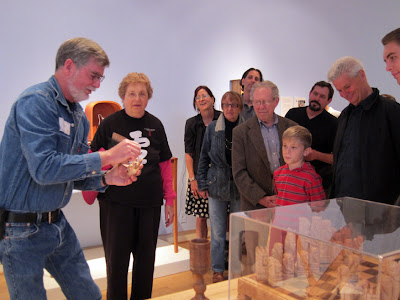The latest project in the shop is a set of seating units designed to flesh out a currently rather empty sun room. My client's home has a great sun room that started life as a porch across almost the entire length on the house. A previous owner had turned the porch into a room with large windows all the way around. Its a bright and airy, west-facing space, with views of agricultural fields and the Monterey Bay. It has the potential to be a great place to curl up and read or enjoy the view. But what it needed was softer surfaces to add some warmth, and storage for the owners' large book collection. It would also have to act as guest quarters for their relatives' kids during family visits. That means they have to do triple duty. First they have open shelving below, for book storage and display.
Second, by day they're window seats for lounging and nature-watching. To help with the lounging part, the potentially "dead" corners are filled with deep storage chests that double as backrests for the adjoining seats.
By night two of the seats expand to become 48" wide beds. To expand, the bed units have two-layer tops hinged at the front. The face frame of the seat slides forward to act as the outboard support, and then the top merely folds out. To facilitate a smooth transition to sleep mode, seat and cushion sizes were designed so that the cushions from non-bed seats fit exactly into the open spaces of the bed units to complete the sleeping surface.
Stay tuned for more on the construction techniques used to execute these pieces.




















































